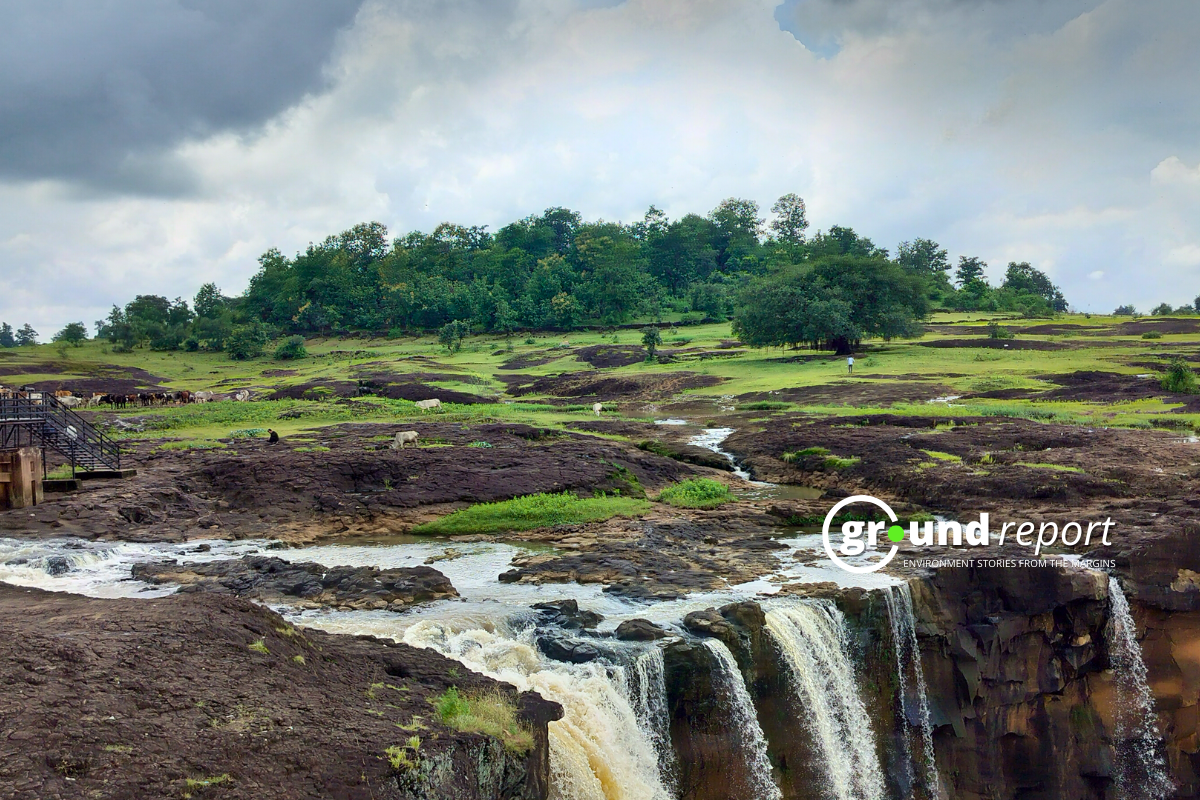Climate change and its effects have left countries vulnerable to disasters, diseases, loss of livelihoods, crop failures, poverty, and displacement. Thereby jeopardising biodiversity and food security. India is highly prone to climate change-related vulnerabilities owing to its varied geography and diverse ecological systems.
The Global Climate Risk Index 2021 which assesses the countries and regions affected most by climate change-related events lists India as the 7th most affected nation due to climate change, India has felt climate change impact in the form of heatwaves, floods, droughts and subsequent agrarian crises among others. The State of India’s Environment in Figures 2022 report revealed that India reported 280 heatwave days between March 11- May 18 2022 across 16 states.
India’s trajectory in addressing climate change is intertwined with its journey since independence in 1947. Post 1947, India grappled with many challenges, foremost being, nation-building and poverty alleviation. It perceived industrialisation and agricultural progress as cornerstones of its economic growth and in the pursuit, environmental concerns were sometimes set aside.
Then India’s Prime Minister, Jawaharlal Nehru while speaking to villagers who were to be displaced due to the construction of the Hirakud Dam in 1948 is famously said to have remarked “If you are to suffer, you should suffer in the interest of the country.” Hirakud Dam constructed on Mahanadi river in Odisha is one of the longest dams in the world.
Participation in Global Environmental Forums
While there was a growing awareness of environmental issues, they didn’t drive the agenda of India’s policymakers till the 1990s. In 1990s, India, spurred by both domestic and international factors, began to engage more actively in the global environmental forums including the United Nations Framework Convention on Climate Change (UNFCCC) at the United Nations Conference on Environment and Development (UNCED) in 1992 in Rio de Janeiro, Brazil. This led to the adoption of the Rio Declaration and the establishment of the United Nations Framework Convention on Climate Change (UNFCCC). The declaration contained 27 principles that were supposed to guide the countries on sustainable development.
The Kyoto Protocol, adopted in December 1997, was a treaty which bound states to commit to reducing greenhouse gas emissions which were causing global warming. The turn of the millennium in the 2000s marked the beginning of India’s formal engagement with climate change policy. The Government of India ratified the Kyoto Protocol to contain the emission of greenhouse gases in 2002.
Indian Approach to Climate Change Becomes Proactive
Further building on it, the Government of India launched the National Action Plan for Climate Change (NPACC) in 2008. It outlined eight national missions on climate change. These included national missions on water, solar energy, energy efficiency, sustainable habitat, sustainable agriculture, and himalayan ecosystems among others. This signified a more proactive approach towards climate change.
In 2010, the government set the Jawaharlal Nehru National Solar Mission into motion aiming to establish India as a leader in solar energy. It made significant strides in expanding its renewable energy capacity. Building upon it, India launched the International Solar Alliance (ISA) with France during the COP21 in Paris in 2015. The ISA set out to mobilise efforts to promote solar energy development and tackle energy access challenges, in solar-rich countries located between the Tropics of Cancer and Capricorn.
India Becomes Party To Paris Agreement and NDCs
At COP21, India also became a party to the Paris Agreement, which was a landmark pact calling on countries to limit the rise in global temperature below 2 degrees Celsius. The Paris Agreement listed Nationally Determined Contributions (NDC) as central to its efforts to mitigate the effects of climate change.
India submitted its first NDCs in 2015 which had targeted to reduce the emissions intensity of its GDP by 33 to 35 percent by 2030 from 2005 level; and achieve about 40 percent cumulative electric power installed capacity from non-fossil fuel-based energy resources by 2030. These NDCs were achieved well before time.
Buoyed by this, India revised its NDC targets in 2022 which India sees as crucial to becoming net zero by 2070. It was an interpretation of the Panchamrit (five nectar elements) – India’s plan to combat climate change which it introduced at COP 26 in Glasgow, United Kingdom.
In 2019, India launched the National Clean Air Programme (NCAP) to address air pollution, a major environmental and public health challenge. Indian cities grapple with one of the worst pollution levels in the world. The NCAP aims to reduce particulate matter (PM) pollution in 102 cities across India by 20-30% over the next five years through a combination of regulatory measures, technology interventions, and public awareness campaigns.
India Introduced Sovereign Green Bonds in 2023
During the fiscal budget for financial year 23-24, India’s finance minister, Nirmala Sitharaman announced the creation of Sovereign Green Bonds to finance public sector initiatives aimed towards reducing the carbon footprint. Green bonds are financial instruments that back environmentally sustainable projects and provide reduced capital expenses compared to conventional bonds. These bonds can exclusively be used to finance or refinance eligible green projects.
Challenges Still Remain
However, despite these efforts, India still remains at huge risk vis a vis the impact of climate change. As per the World Bank, More than 80% of the Indian population is susceptible to climate change one way or the other, while India remains the most vulnerable country to climate change followed by Pakistan, the Philippines and Bangladesh, as per HSBC ranking.
Over the past decade and a half, India has seen devastating floods in the Himalayan regions of Uttarakhand, Himachal Pradesh and Kashmir valley, twice down south in Chennai. Many regions such as Marathwada and Vidarbha in Maharashtra have experienced frequent droughts. Farmers in many states continue to commit suicide due to debts caused by crop failures. As per the National Crime Records Bureau (NCRB) report, more than 1,00,474 suicides have been reported in the farming sector from 2014 to 2022, 30 suicides a day on average.
Besides, climate change is also bleeding India’s economy. The World Meteorological Department in its Climate of Asia 2020 report said that India had suffered a loss of 87 billion dollars due to climate change-related events.
Still a Long Way Away
India has taken several measures and over time evolved a multi-pronged and sophisticated approach to climate-related emergencies. Many of them are bearing fruit, such as an uptick in electric vehicle sales, and the production of green hydrogen as an alternative to fossil fuels, but it is still a long way away from its target of net zero by 2070. A case in point is its overreliance on traditional fuels such as coal to cater to the majority of its energy needs hampering its efforts. Coal still accounts for 55% of India’s energy needs, as per the coal ministry.
Similarly, states in India have fallen short of achieving their targets to improve forest cover under the Green India Mission. With India’s food security also at risk, India also needs to invest heavily in ensuring resilience for its agriculture industry. Indian Council for Agricultural Research (ICAR) had recommended investing in research capacity for adaptation besides policy changes for promoting resource conservation and efficiency, and infrastructure for water management.
It also suggested increasing insurance coverage, enhancing climate change communication, diversifying livelihoods, and reducing agricultural dependence while improving livestock management, soil carbon levels, and energy efficiency in agriculture.
India also needs to push harder for climate investments and grants which have been pledged by the developed countries. Article 9 of the Paris Agreement mandates that developed nations must offer financial support to aid developing nations in both mitigating and adapting to climate change, in line with their ongoing responsibilities outlined in the Convention. But the support has been hard to come by. India at COP 27 pitched for the $100 billion per year fund for the developing countries to meet their targets, which was committed to by the developed countries at COP 15 in Copenhagen in 2009.
Keep Reading
Lightning strikes leave two children without their mother in West Bengal
In Jammu, lightning strikes kill livestock, compensation not adequate say shepherds
Indigenous communities in J&K struggle with increasing lightning risks to livelihoods
Follow Ground Report for Environmental News from India. Connect with us on Facebook, Twitter, Koo App, Instagram, Whatsapp and YouTube. Write us at GReport2018@gmail.com and subscribe to our free newsletter.
Don’t forget to check out our climate glossary, it helps in learning difficult environmental terms in simple language.








